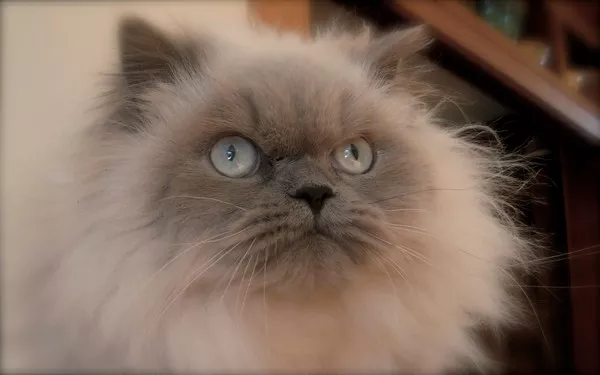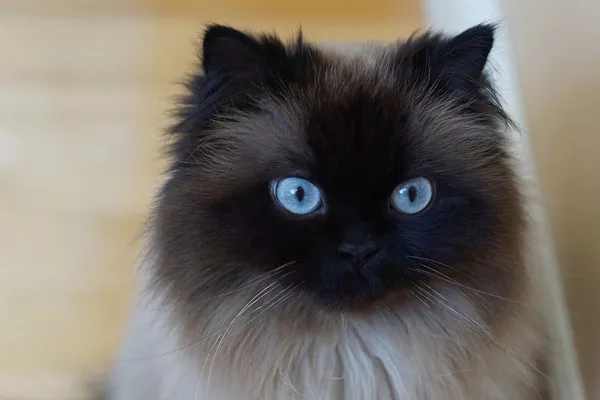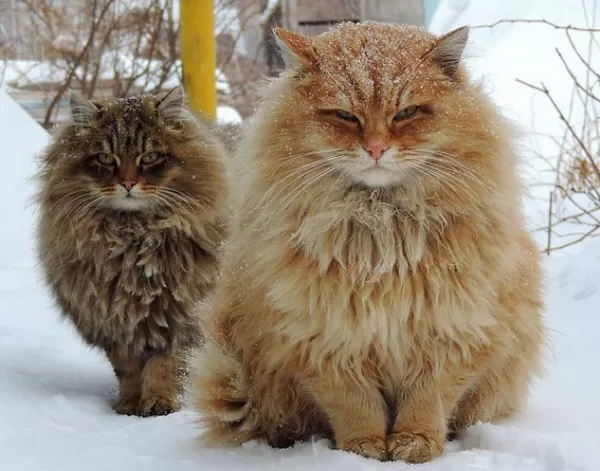Himalayan cats, with their striking blue eyes and luxurious fur, are a beloved breed among cat enthusiasts. Known for their affectionate nature and gentle demeanor, Himalayans make wonderful companions for cat lovers around the world. However, like all cats, Himalayans have specific grooming needs, and shedding is a common concern for prospective owners. In this comprehensive guide, we’ll delve into the shedding habits of Himalayan cats, debunking myths and providing practical tips for managing their grooming needs.
Introduction to Himalayan Cats
Before diving into the shedding habits of Himalayan cats, let’s take a closer look at this unique breed:
1. Origin and History:
Himalayan cats are a breed derived from the crossbreeding of Persian and Siamese cats. Developed in the 1950s, Himalayans combine the luxurious coat of the Persian with the striking color points of the Siamese, resulting in a breed known for its beauty and elegance.
2. Physical Characteristics:
Himalayan cats are known for their distinctive appearance, characterized by their long, flowing fur, striking blue eyes, and color points on their ears, face, paws, and tail. They have a stocky build and a sweet, expressive face that adds to their charm.
3. Temperament and Personality:
Himalayans are affectionate, gentle, and people-oriented cats. They enjoy being close to their human companions and thrive on attention and affection. Himalayans are known for their calm and laid-back demeanor, making them ideal companions for families, singles, and seniors alike.
Understanding Shedding in Himalayan Cats
Shedding is a natural process in which cats lose old or damaged fur to make way for new growth. While all cats shed to some extent, the frequency and amount of shedding can vary depending on factors such as breed, season, and individual genetics. Let’s explore shedding in Himalayan cats in more detail:
1. Coat Type:
Himalayan cats have a long, dense double coat that requires regular grooming to keep it in top condition. Their fur is soft and silky, with a thick undercoat that provides insulation and protection against the elements. While their coat may appear to shed less than short-haired breeds, Himalayans still experience regular shedding throughout the year.
2. Seasonal Shedding:
Like many cat breeds, Himalayans undergo seasonal shedding, with heavier shedding typically occurring in the spring and fall. During these times, Himalayans may shed more profusely as they prepare for the change in weather and temperature. Regular grooming can helpminimize shedding and keep your Himalayan’s coat looking its best.
3. Grooming Needs:
Proper grooming is essential for managing shedding in Himalayan cats. Regular brushing helps remove loose fur, tangles, and mats, reducing the amount of hair that ends up on your furniture and clothing. Use a soft-bristle brush or a stainless steel comb to gently comb through your Himalayan’s coat, paying special attention to areas prone to matting, such as behind the ears and under the armpits.
Tips for Managing Shedding in Himalayan Cats
While Himalayan cats may shed less than some other breeds, regular grooming is still essential for keeping their coat healthy and minimizing shedding. Here are some practical tips for managing shedding in Himalayan cats:
1. Establish a Grooming Routine:
Set aside time each day for grooming your Himalayan cat. Use a soft-bristle brush or comb to gently brush through their coat, removing loose fur and tangles. Regular grooming helps distribute natural oils throughout the coat, keeping it shiny and healthy.
2. Provide a Balanced Diet:
A nutritious diet plays a crucial role in maintaining your Himalayan cat’s coat health and minimizing shedding. Choose a high-quality cat food formulated to meet their specific nutritional needs, with a focus on protein, omega-3 fatty acids, and vitamins and minerals that support skin and coat health.
3. Monitor for Signs of Underlying Health Issues:
While shedding is a normal process for cats, excessive or sudden shedding can sometimes be a sign of underlying health issues such as allergies, skin infections, or hormonal imbalances. If you notice any changes in your Himalayan cat’s shedding patterns or coat condition, consult with your veterinarian for a thorough evaluation.
Dispelling Common Myths About Shedding in Himalayan Cats
There are several myths and misconceptions surrounding shedding in Himalayan cats. Let’s debunk some of the most common myths:
1. Myth: Himalayan cats don’t shed.
Reality: While Himalayan cats may shed less than some other breeds, they still experience regular shedding as part of their natural grooming process.
2. Myth: Shaving a Himalayan cat will reduce shedding.
Reality: Shaving a Himalayan cat’s coat is not recommended and can disrupt the natural growth cycle of their fur. Regular grooming and proper coat care are more effective ways to manage shedding in Himalayans.
3. Myth: Himalayan cats only shed in the summer.
Reality: Himalayan cats undergo seasonal shedding, with heavier shedding typically occurring in the spring and fall as they prepare for changes in temperature and weather.
Conclusion: Embracing Your Himalayan’s Natural Beauty
In conclusion, shedding is a natural process for Himalayan cats, as it is for all cat breeds. While Himalayans may shed less than some other breeds, they still require regular grooming and coat care to keep their fur looking its best. By establishing a grooming routine, providing a balanced diet, and monitoring for signs of underlying health issues, you can help minimize shedding and keep your Himalayan cat’s coat healthy and beautiful for years to come. Embrace your Himalayan’s natural beauty and enjoy the bond you share with your affectionate and friendly feline companion.
FAQs:
1. What are the disadvantages of Himalayan cats?
Himalayan cats, while beloved for their striking appearance and affectionate nature, do come with some disadvantages. One major drawback is their susceptibility to health issues, particularly those related to their brachycephalic (flat-faced) features, such as respiratory problems and dental issues. Additionally, their long fur requires regular grooming to prevent mats and tangles, which can be time-consuming. Himalayans are also prone to tear staining, necessitating daily cleaning of their facial fur. Furthermore, their sensitive nature may make them more prone to stress in certain environments, requiring a calm and predictable home environment to thrive.
2. Are Himalayan cats low maintenance?
Himalayan cats are not considered low maintenance pets. Due to their long fur, they require regular grooming to prevent matting and tangles, which can be time-consuming. Additionally, their flat faces can lead to respiratory and dental issues, necessitating regular veterinary care. Himalayans also have a tendency to develop tear stains, requiring daily cleaning. Furthermore, their affectionate nature means they thrive on human interaction and may become bored or anxious if left alone for long periods. While they make wonderful companions, prospective owners should be prepared to invest time and effort into caring for their Himalayan cat’s needs.
3. Do Himalayan cats like to be held?
Himalayan cats are generally known for their affectionate nature and often enjoy being held by their human companions. However, individual preferences can vary among cats. Some Himalayans may eagerly seek out cuddle sessions and happily perch in their owner’s arms, reveling in the attention and affection. Others may be more reserved or independent, preferring to sit beside their owner rather than being held. Like all cats, Himalayans appreciate gentle handling and positive interactions. Building a strong bond through trust and respect can encourage them to enjoy being held and cuddled by their favorite humans.


























